Kia Ceed Sportswagon vs Mazda CX-30 – Which car suits you better?
Compare performance, boot capacity, efficiency and price at a glance.
Find out which car is the better choice for you – Kia Ceed Sportswagon or Mazda CX-30?
Costs and Efficiency:
Price and efficiency are often the first things buyers look at. Here it becomes clear which model has the long-term edge – whether at the pump, the plug, or in purchase price.
Kia Ceed Sportswagon has a hardly perceptible advantage in terms of price – it starts at 24300 £, while the Mazda CX-30 costs 25200 £. That’s a price difference of around 900 £.
Fuel consumption also shows a difference: Mazda CX-30 manages with 5.70 L and is therefore barely noticeable more efficient than the Kia Ceed Sportswagon with 6 L. The difference is about 0.30 L per 100 km.
Engine and Performance:
Under the bonnet, it becomes clear which model is tuned for sportiness and which one takes the lead when you hit the accelerator.
When it comes to engine power, the Mazda CX-30 has a distinct edge – offering 186 HP compared to 140 HP. That’s roughly 46 HP more horsepower.
In acceleration from 0 to 100 km/h, the Mazda CX-30 is to a small extent quicker – completing the sprint in 8.30 s, while the Kia Ceed Sportswagon takes 9.70 s. That’s about 1.40 s faster.
In terms of top speed, the Mazda CX-30 performs hardly perceptible better – reaching 204 km/h, while the Kia Ceed Sportswagon tops out at 197 km/h. The difference is around 7 km/h.
There’s also a difference in torque: Kia Ceed Sportswagon pulls barely noticeable stronger with 253 Nm compared to 240 Nm. That’s about 13 Nm difference.
Space and Everyday Use:
Beyond pure performance, interior space and usability matter most in daily life. This is where you see which car is more practical and versatile.
Both vehicles offer seating for 5 people.
In curb weight, Kia Ceed Sportswagon is slight lighter – 1335 kg compared to 1455 kg. The difference is around 120 kg.
In terms of boot space, the Kia Ceed Sportswagon offers noticeable more room – 625 L compared to 430 L. That’s a difference of about 195 L.
In maximum load capacity, the Kia Ceed Sportswagon performs slightly better – up to 1694 L, which is about 288 L more than the Mazda CX-30.
When it comes to payload, Mazda CX-30 minimal takes the win – 496 kg compared to 485 kg. That’s a difference of about 11 kg.
Who wins the race?
The Mazda CX-30 proves to be secures victory with a clear margin and therefore becomes our DriveDuel Champion!
Mazda CX-30 is the better all-rounder in this comparison.
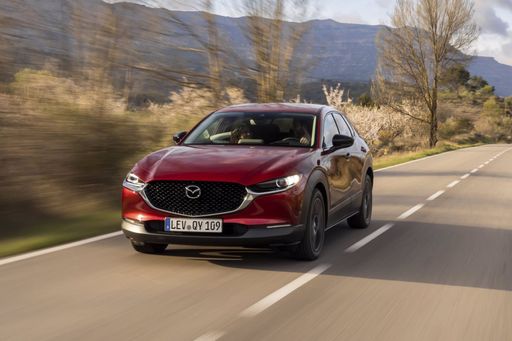
Mazda CX-30
Kia Ceed Sportswagon
The Kia Ceed Sportswagon is a versatile estate car that combines practicality with a touch of elegance. It offers a spacious interior, making it ideal for families or those with an active lifestyle. The vehicle's sleek design and advanced features make it a strong contender in the competitive estate car market.
details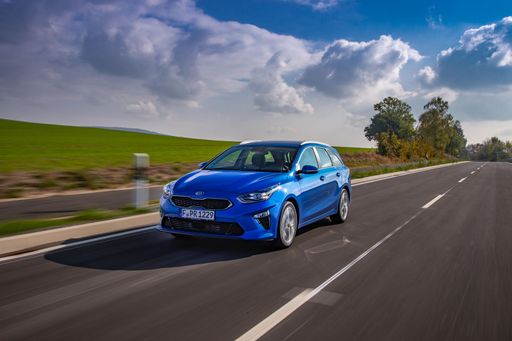 @ press.kia.com
@ press.kia.com
 @ press.kia.com
@ press.kia.com
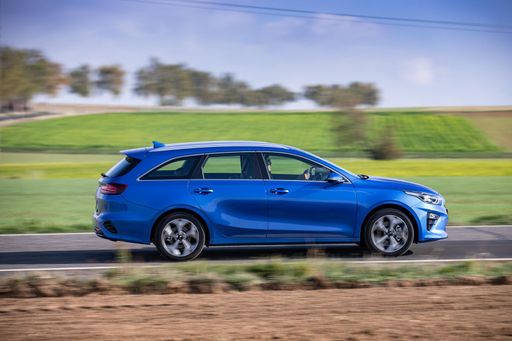 @ press.kia.com
@ press.kia.com
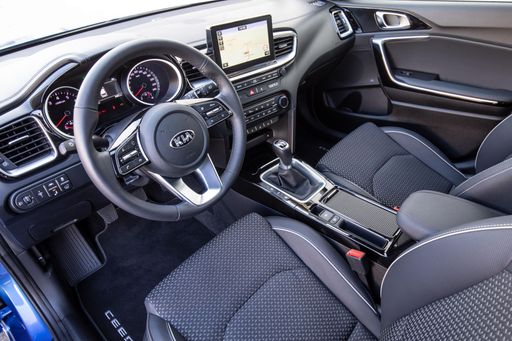 @ press.kia.com
@ press.kia.com
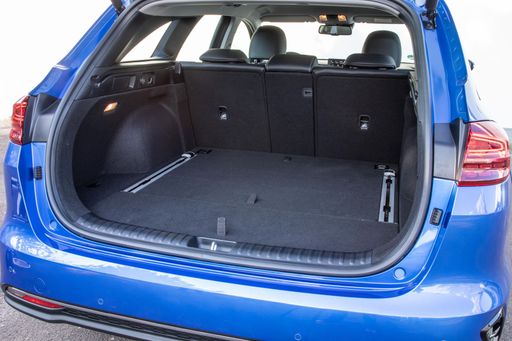 @ press.kia.com
@ press.kia.com
Mazda CX-30
The Mazda CX-30 effortlessly combines sleek design with a sense of adventure, making it an appealing choice for urban explorers and countryside enthusiasts alike. Inside, the cabin is thoughtfully designed, offering both comfort and cutting-edge technology to enhance the driving experience. Its performance on the road is agile, providing a smooth and engaging journey for drivers and passengers.
details @ de.mazda-press.com
@ de.mazda-press.com
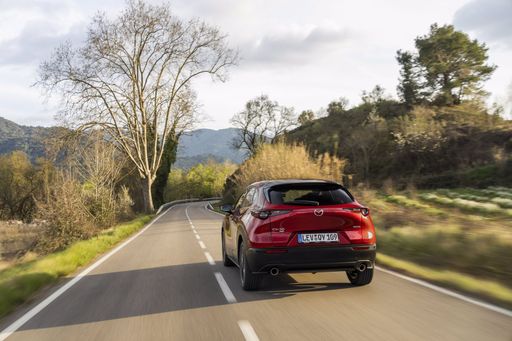 @ de.mazda-press.com
@ de.mazda-press.com
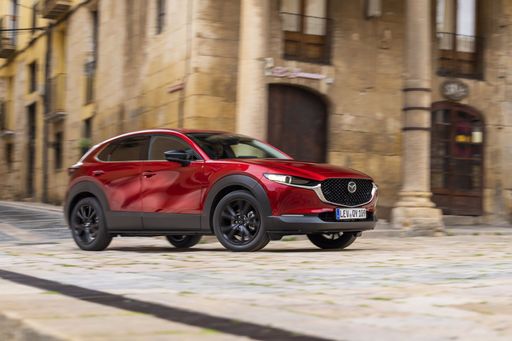 @ de.mazda-press.com
@ de.mazda-press.com
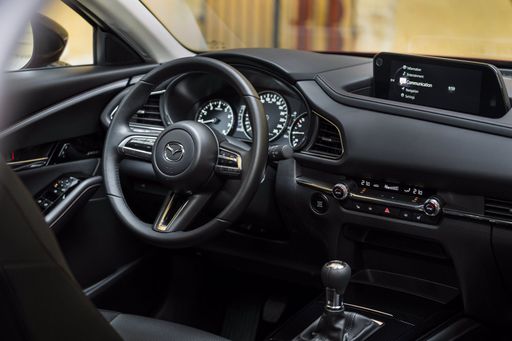 @ de.mazda-press.com
@ de.mazda-press.com

|

|
|
|
|
Costs and Consumption |
|
|---|---|
|
Price
24300 - 29100 £
|
Price
25200 - 36800 £
|
|
Consumption L/100km
6 - 6.4 L
|
Consumption L/100km
5.7 - 6.6 L
|
|
Consumption kWh/100km
-
|
Consumption kWh/100km
-
|
|
Electric Range
-
|
Electric Range
-
|
|
Battery Capacity
-
|
Battery Capacity
-
|
|
co2
137 - 146 g/km
|
co2
129 - 148 g/km
|
|
Fuel tank capacity
50 L
|
Fuel tank capacity
48 - 51 L
|
Dimensions and Body |
|
|---|---|
|
Body Type
Estate
|
Body Type
SUV
|
|
Seats
5
|
Seats
5
|
|
Doors
5
|
Doors
5
|
|
Curb weight
1335 - 1437 kg
|
Curb weight
1455 - 1587 kg
|
|
Trunk capacity
512 - 625 L
|
Trunk capacity
422 - 430 L
|
|
Length
4605 mm
|
Length
4395 mm
|
|
Width
1800 mm
|
Width
1795 mm
|
|
Height
1422 - 1465 mm
|
Height
1540 mm
|
|
Max trunk capacity
1545 - 1694 L
|
Max trunk capacity
1398 - 1406 L
|
|
Payload
455 - 485 kg
|
Payload
458 - 496 kg
|
Engine and Performance |
|
|---|---|
|
Engine Type
Petrol, Petrol MHEV
|
Engine Type
Petrol MHEV
|
|
Transmission
Automatic, Manuel
|
Transmission
Manuel, Automatic
|
|
Transmission Detail
Dual-Clutch Automatic, Manual Gearbox
|
Transmission Detail
Manual Gearbox, Automatic Gearbox
|
|
Drive Type
Front-Wheel Drive
|
Drive Type
Front-Wheel Drive, All-Wheel Drive
|
|
Power HP
100 - 140 HP
|
Power HP
140 - 186 HP
|
|
Acceleration 0-100km/h
9.7 - 13.5 s
|
Acceleration 0-100km/h
8.3 - 10.3 s
|
|
Max Speed
178 - 197 km/h
|
Max Speed
191 - 204 km/h
|
|
Torque
172 - 253 Nm
|
Torque
238 - 240 Nm
|
|
Number of Cylinders
3 - 4
|
Number of Cylinders
4
|
|
Power kW
74 - 103 kW
|
Power kW
103 - 137 kW
|
|
Engine capacity
998 - 1482 cm3
|
Engine capacity
1998 - 2488 cm3
|
General |
|
|---|---|
|
Model Year
2024
|
Model Year
2025
|
|
CO2 Efficiency Class
E
|
CO2 Efficiency Class
D, E
|
|
Brand
Kia
|
Brand
Mazda
|
Is the Kia Ceed Sportswagon offered with different drivetrains?
The Kia Ceed Sportswagon is available as Front-Wheel Drive.
The prices and data displayed are estimates based on German list prices and may vary by country. This information is not legally binding.
